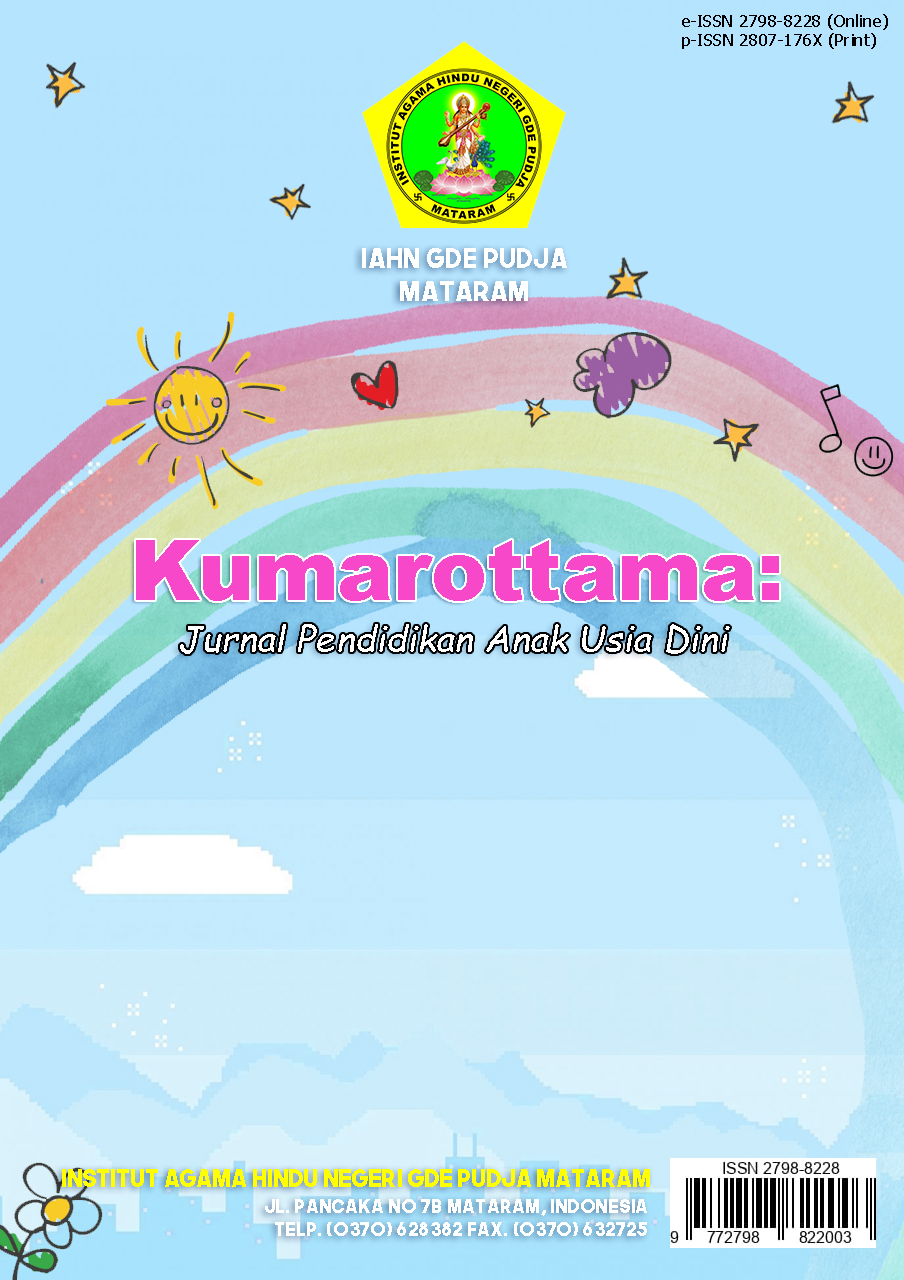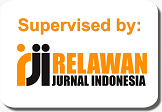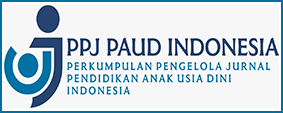Enhancing Cognitive Development of Stunted Children through Sensory Modalities: Evidence from Mataram, Indonesia
Abstract
Stunting is a chronic nutritional problem that is still a serious concern in Indonesia, especially in West Nusa Tenggara, where the prevalence reaches more than 30%. In addition to impacting delayed physical growth, stunting also has implications for children's brain and cognitive development, which is characterized by low IQ scores, language delays, and reduced problem-solving skills. This study aims to analyze how sensory modalities can be used to stimulate the brains of stunted children in Mataram, focusing on strategies applied by teachers and parents. The study used a qualitative descriptive approach with a phenomenological design, involving six stunted children at Dwijendra Mataram Kindergarten, as well as supporting data from teachers and parents through observation, structured interviews, documentation, and simple questionnaires. The results indicated that stunted children responded more slowly to visual and auditory tasks but were more adaptive to tactile and kinesthetic stimulation, while 70% of teachers had never received special training and 65% of parents did not understand the importance of sensory-based brain stimulation. These findings confirm that stunting in Mataram is not only influenced by malnutrition, but also by limited stimulation of the human senses, namely the senses of sight, hearing, smell, taste and touch. both at school and at home. The originality of this research lies in the introduction of the concept of modality task fit, which emphasizes the importance of choosing the type of stimulation according to the strength of the sensory pathway of stunted children. This concept contributes to early childhood education and public health by offering a precise, systematic, and effective intervention framework. The study's conclusions emphasized the importance of combining nutritional improvement with multi-sensory-based brain stimulation to optimize the cognitive development of stunted children.
References
Abebe, B. T., Weiss, M., Modess, C., Roustom, T., Tadken, T., Wegner, D., Schwantes, U., Neumeister, C., Schulz, H., Scheuch, E., al., et, Abu-Saad, K., Murad, H., Barid, R., Olmer, L., Ziv, A., Younis-Zeidan, N., Kaufman-Shriqui, V., Gillon-Keren, M., … Masha’al, D. (2019). Mindfulness virtual community. Trials, 17(1).
Ariani, M. (2020). Determinan Penyebab Kejadian Stunting Pada Balita: Tinjauan Literatur. Dinamika Kesehatan: Jurnal Kebidanan Dan Keperawatan, 11(1). https://doi.org/10.33859/dksm.v11i1.559
Black, M. M., Pérez-Escamilla, R., & Rao, S. F. (2015). Integrating nutrition and child development interventions: Scientific basis, evidence of impact, and implementation considerations. Advances in Nutrition, 6(6). https://doi.org/10.3945/an.115.010348
Borja, J. B., & Amarra, S. (2013). The impact of early nutrition on health: Key findings from the cebu longitudinal health and nutrition survey (CLHNS). Malaysian Journal of Nutrition, 19(1).
Budiastutik, I., & Nugraheni, S. A. (2019). Determinant of Stunting in Indonesia: A Review Article. International Journal of Healthcare Research, 1(2). https://doi.org/10.12928/ijhr.v1i2.753
Chang, S. M., Walker, S. P., Grantham-McGregor, S., & Powell, C. A. (2002). Early childhood stunting and later behaviour and school achievement. Journal of Child Psychology and Psychiatry and Allied Disciplines, 43(6). https://doi.org/10.1111/1469-7610.00088
Chattopadhyay, N., & Saumitra, M. (2016). Developmental outcome in children with malnutrition. Journal of Nepal Paediatric Society, 36(2). https://doi.org/10.3126/jnps.v36i2.14619
Gladstone, M., Mallewa, M., Alusine Jalloh, A., Voskuijl, W., Postels, D., Groce, N., Kerac, M., & Molyneux, E. (2014). Assessment of neurodisability and malnutrition in children in Africa. Seminars in Pediatric Neurology, 21(1). https://doi.org/10.1016/j.spen.2014.01.002
Goodwin, P. M. (2008). Sensory experiences in the early childhood classroom: Teachers’ use of activities, perceptions of the importance of activities, and barriers to implementation. Oklahoma State University.
Hariz, M., Blomstedt, P., & Zrinzo, L. (2013). Future of brain stimulation: New targets, new indications, new technology. In Movement Disorders (Vol. 28, Issue 13). https://doi.org/10.1002/mds.25665
Haselow, N. J., Stormer, A., & Pries, A. (2016). Evidence-based evolution of an integrated nutrition-focused agriculture approach to address the underlying determinants of stunting. Maternal and Child Nutrition, 12. https://doi.org/10.1111/mcn.12260
Lantara, A. M. H. D., Sangkal, A., Latief, S., Darma, S., & Bakhtiar, I. K. A. (2024). Stunting and Cognitive Develompent of Children Aged 2-5 Years. Jurnal Biologi Tropis, 24(1), 753–758.
Lessa Horta, B., Victora, C. G., Loret De Mola, C., Quevedo, L., Tavares Pinheiro, R., Gigante, D. P., Vieira, J., Motta, S., & Barros, F. C. (2016). Associations of Linear Growth and Relative Weight Gain in Early Life with Human Capital at 30 Years of Age THE JOURNAL OF PEDIATRICS • www.jpeds.com. The Journal of Pediatrics, 182.
Mediani, H. S. (2020). Predictors of Stunting Among Children Under Five Year of Age in Indonesia: A Scoping Review. Global Journal of Health Science, 12(8). https://doi.org/10.5539/gjhs.v12n8p83
Meliati, L., Ekayani, N. P. K., & Khadijah, S. (2020). Effects of the Mother’s Individual Stimulation on the Growth and Development of Infants With Low Birth Weight History. Journal of Holistic Nursing and Midwifery, 30(4). https://doi.org/10.32598/jhnm.30.4.2039
Nazidah, M. D. P., Fauziah, R., Hafidah, R., Jumiatmoko, J., & Nurjanah, N. E. (2022). Pengaruh Stunting pada Kognitif Anak Usia Dini. Yinyang: Jurnal Studi Islam Gender Dan Anak. https://doi.org/10.24090/yinyang.v17i1.4964
Polanía, R., Nitsche, M. A., & Ruff, C. C. (2018a). Establishing brain-behavior relations with NIBS Studying and modifying brain function with non-invasive brain stimulation. Nature Neuroscience, 21.
Polanía, R., Nitsche, M. A., & Ruff, C. C. (2018b). Studying and modifying brain function with non-invasive brain stimulation. In Nature Neuroscience (Vol. 21, Issue 2). https://doi.org/10.1038/s41593-017-0054-4
Schulder, M., Mishra, A., Mammis, A., Horn, A., Boutet, A., Blomstedt, P., Chabardes, S., Flouty, O., Lozano, A. M., Neimat, J. S., Ponce, F., Starr, P. A., Krauss, J. K., Hariz, M., & Chang, J. W. (2023). Advances in Technical Aspects of Deep Brain Stimulation Surgery. In Stereotactic and Functional Neurosurgery (Vol. 101, Issue 2). https://doi.org/10.1159/000529040
Soliman, A., De Sanctis, V., Alaaraj, N., Ahmed, S., Alyafei, F., Hamed, N., & Soliman, N. (2021). Early and long-term consequences of nutritional stunting: From childhood to adulthood. Acta Biomedica, 92(1). https://doi.org/10.23750/abm.v92i1.11346
Susanti, A. I., Arya, I. F. D., Megawati, G., Fatimah, S. N., Sari, S. Y. I., & Mandiri, A. (2024). Optimalisasi Peran Pola Asuh Orang Tua Dalam Pencegahan Stunting Pada Balita: Edukasi Komprehensif. WIDYA LAKSANA, 13(2).

This work is licensed under a Creative Commons Attribution-ShareAlike 4.0 International License.
Authors who publish with this journal agree to the following terms:
- Authors retain copyright and grant the journal right of first publication with the work simultaneously licensed under a Creative Commons Attribution-ShareAlike 4.0 International License that allows others to share the work with an acknowledgement of the works authorship and initial publication in this journal.
- Authors are able to enter into separate, additional contractual arrangements for the non-exclusive distribution of the journals published version of the work (e.g., post it to an institutional repository or publish it in a book), with an acknowledgement of its initial publication in this journal.
- Authors are permitted and encouraged to post their work online (e.g., in institutional repositories or on their website) prior to and during the submission process, as it can lead to productive exchanges, as well as earlier and greater citation of published work (See The Effect of Open Access).











.png)














